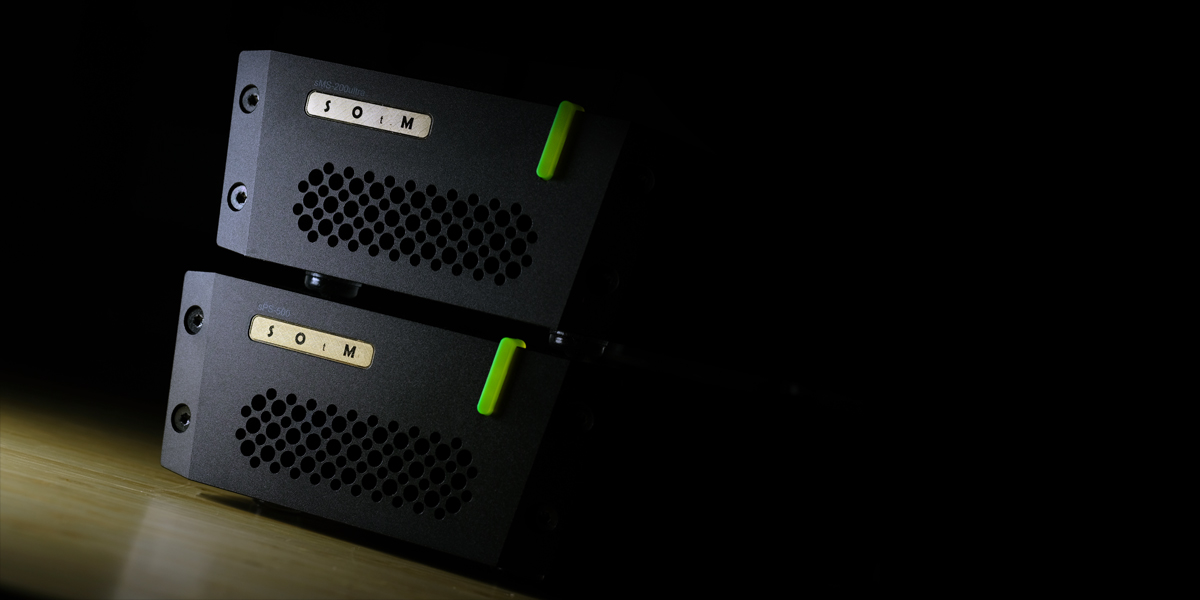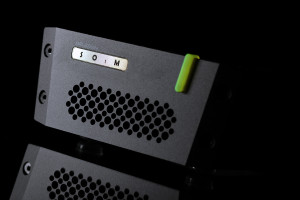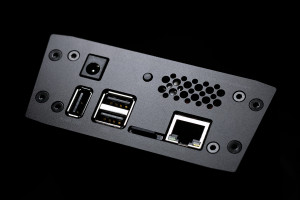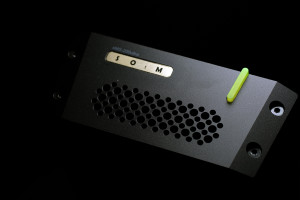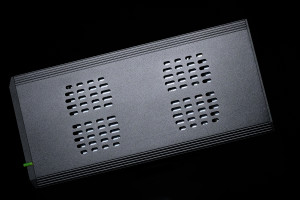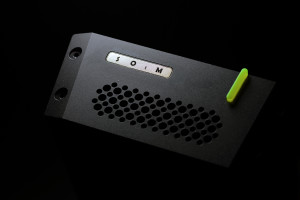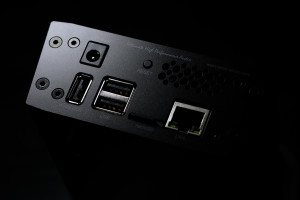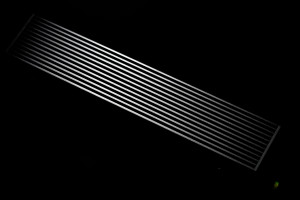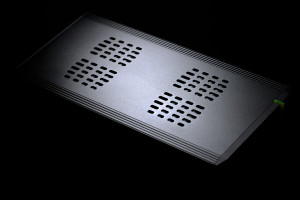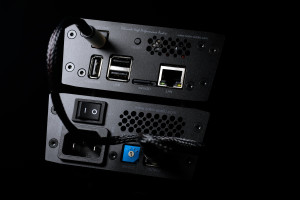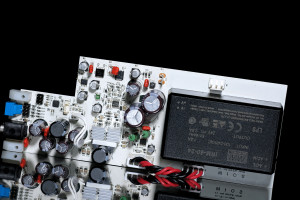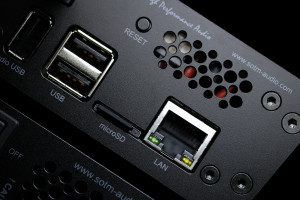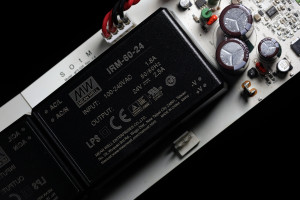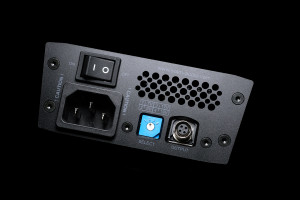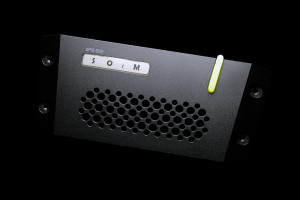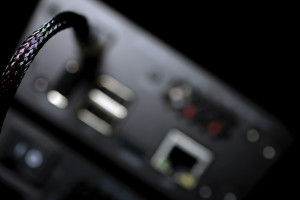Network audio streaming associated with audiophile alike experience seemed to be inappropriate several years back. These days this method in particular isn’t ridiculed any longer but taken very seriously instead. The SOtM company is one of the most known into digital music served like so, has been around for years and its two products – SOtM sMS-200ultra and sPS-500 – are this review’s heroes. Enjoy!
Introduction
This reporter’s adventure with SOtM started quite innocently. During Munich’s High End event in May 2016, Martin Gateley of soundkaos exhibited in a small room with his back then new Libération speakers aka. Libby the owl. This product was supported via several SOtM’s top shelf Ultimate series machines stacked; sDP-1000EX, sMS-1000SQ, sPS-1000 and sPA-1000. That’s when this reporter stumbled upon this South Korean brand for the very first time and the next one happened exactly 12 months later, also in Munich. SOtM’s May Park showcased a number of clever goods far smaller and easier on the wallet in comparison to this company’s TOTL hardware and these petite critters netted my sincere interest ever since. In 2018, shortly past the biggest audio event in Europe – that’s High End Munich still – the cat’n’mouse game was finally over. May reached out, I was still interested and that’s how this review came to be. It was a process for both of us. Prior to my loaners’ arrival, I learnt that Adam Mokrzycki aka. Elberoth aka. The Polish Audio Video Show’s main man, holds SOtM’s hardware in high regard. The man’s known to be very much obsessed with files/streaming based platforms and over the years has rolled with quite the number of these, oftentimes as expensive as Aurender’s W20 deck for example. Once asked about his sMS-200ultra, Adam followed that this product in particular (along with several separate PSUs, a galvanic isolator, a USB reclocker, a proper PC based storage and a bunch of necessary cables to connect it all) netted the best result at his place thus far. This far cry from a standalone full-sized audiophile box might seem suspicious to people into those. Still, such a promising outcome Adam achieved not in an instant but via extensive tinkering and connecting all dots over several years long span. The takeaway is that for Elberoth it’s been quite the journey, SOtM’s hardware got him to the current destination place and his story additionally motivated yours truly to conduct his own investigation. After all, the best way to know what’s what in this hobby is to hear it for yourself.
Prior to my loaners’ arrival, I learnt that Adam Mokrzycki aka. Elberoth aka. The Polish Audio Video Show’s main man, holds SOtM’s hardware in high regard. The man’s known to be very much obsessed with files/streaming based platforms and over the years has rolled with quite the number of these, oftentimes as expensive as Aurender’s W20 deck for example. Once asked about his sMS-200ultra, Adam followed that this product in particular (along with several separate PSUs, a galvanic isolator, a USB reclocker, a proper PC based storage and a bunch of necessary cables to connect it all) netted the best result at his place thus far. This far cry from a standalone full-sized audiophile box might seem suspicious to people into those. Still, such a promising outcome Adam achieved not in an instant but via extensive tinkering and connecting all dots over several years long span. The takeaway is that for Elberoth it’s been quite the journey, SOtM’s hardware got him to the current destination place and his story additionally motivated yours truly to conduct his own investigation. After all, the best way to know what’s what in this hobby is to hear it for yourself.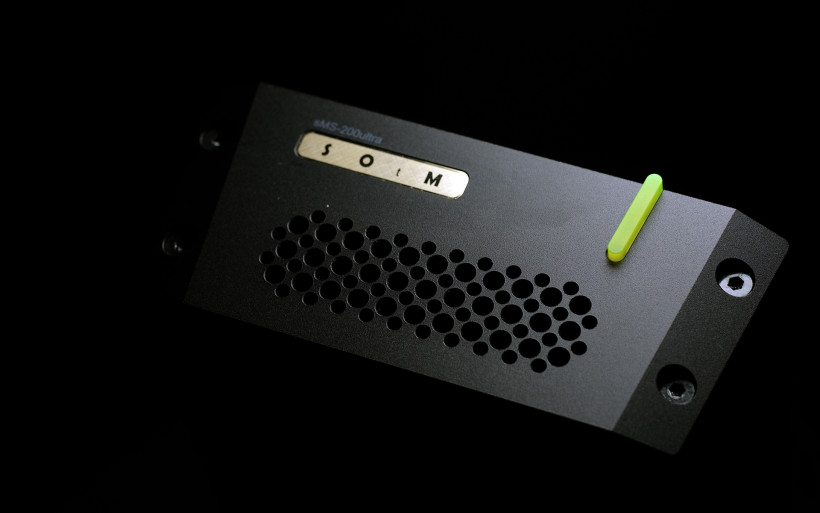 Established in 2008, SOtM (Soul Of the Music) celebrates its 10th anniversary this year. The CEO’s and the chief engineer’s duties are on Lee Il-won’s shoulders. He’s into both software and hardware design and backed by two engineers, whereas my contact – May – is responsible for marketing/sales and four additional employees operate the manufacturing line and handle logistics. This South Korean team of eight people in total is very prolific as one glimpse at the current SOtM’s portfolio says it all. It’s very easy to get lost in there early on.
Established in 2008, SOtM (Soul Of the Music) celebrates its 10th anniversary this year. The CEO’s and the chief engineer’s duties are on Lee Il-won’s shoulders. He’s into both software and hardware design and backed by two engineers, whereas my contact – May – is responsible for marketing/sales and four additional employees operate the manufacturing line and handle logistics. This South Korean team of eight people in total is very prolific as one glimpse at the current SOtM’s portfolio says it all. It’s very easy to get lost in there early on.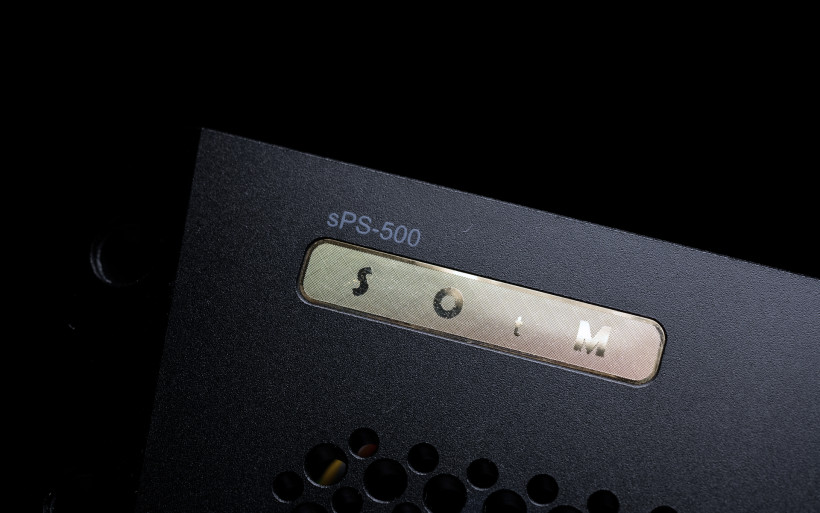 SOtM offers three series in total – Advanced, Advanced II and Ultimate – represented by goods very small, a bit bigger and full-sized respectively. All this hardware is mostly focused on digital audio one way or another and topped via various complimentary and DIY oriented products, i.e. cables, PCI-E cards and many others. The company’s naming pattern is far from easy to remember, but its philosophy based on upgrades is nothing short but clever. A single box affair can in time morph into a stack of several similar lookers designed to work synergistically as a team. This review’s main star can be pushed further via the same manufacturer’s additionals; tX-USBultra USB sorter, sCLK-OCX10 master clock generator and sPS-500 power supply unit. The route described is appealing on many counts yet entirely optional; one can cherry-pick functionality to pursue, prioritize his setup’s growth accordingly or do nothing extra and roll with a single brick only. In this regard in particular, SOtM is very similar to i.e. iFi audio. It’s all about one’s freedom of choice and options. The more numerous these are the better for a customer, even if he’s somewhat confused early on.
SOtM offers three series in total – Advanced, Advanced II and Ultimate – represented by goods very small, a bit bigger and full-sized respectively. All this hardware is mostly focused on digital audio one way or another and topped via various complimentary and DIY oriented products, i.e. cables, PCI-E cards and many others. The company’s naming pattern is far from easy to remember, but its philosophy based on upgrades is nothing short but clever. A single box affair can in time morph into a stack of several similar lookers designed to work synergistically as a team. This review’s main star can be pushed further via the same manufacturer’s additionals; tX-USBultra USB sorter, sCLK-OCX10 master clock generator and sPS-500 power supply unit. The route described is appealing on many counts yet entirely optional; one can cherry-pick functionality to pursue, prioritize his setup’s growth accordingly or do nothing extra and roll with a single brick only. In this regard in particular, SOtM is very similar to i.e. iFi audio. It’s all about one’s freedom of choice and options. The more numerous these are the better for a customer, even if he’s somewhat confused early on.
Build
SOtM sMS-200ultra is a network player, thus a device which sends files from a storage to a DAC and is operated either wirelessly via a tablet or a wired PC connected to the same local area network. Here LAN comes in as the key component which essentially glues everything together; it provides remote access to music stored elsewhere and makes web browser based navigation possible. This general principle hasn’t changed since its early days and Aurender, Lumin, Fidata and Auralic to name a few have been successfully exploiting it for years. That’s why to be familiar with at least one such a product is to be able to handle with similar ease any other in the same ballpark. It’s also good to know that i.e. tablets in a network based audio environment serve as convenient remote control devices which operate beyond the audio chain, thus don’t impact sound quality in any way.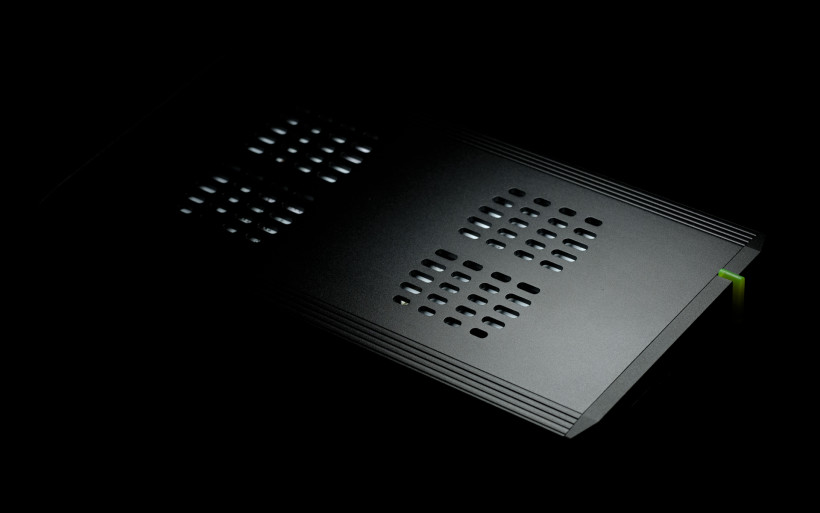 SOtM sMS-200ultra weighs 1.5kg and measures (WxHxD) 106x48x227mm, thus is petite and light. Some bigger network players sport a display, but this review’s hero is of frame far too small to accommodate any. Not a con though, simply because the SOtM’s deck was designed to rely solely on a separate interface and this reporter’s iPad Air 2 handled this task perfectly fine. With its enclosure made fully out of aluminium, sandblasted, neatly trimmed in several places and in general of quality, the sMS-200ultra looks appealing. Visually this is not yet another boring box. Green LED on its front doubles as a power switch, a manufacturer’s logo is located a bit to the left and venting holes down below form a semi-rectangular pattern. The product sits on four small rubber feet, shallow radiator fins are found on both sides and even more protrusions occupy its top.
SOtM sMS-200ultra weighs 1.5kg and measures (WxHxD) 106x48x227mm, thus is petite and light. Some bigger network players sport a display, but this review’s hero is of frame far too small to accommodate any. Not a con though, simply because the SOtM’s deck was designed to rely solely on a separate interface and this reporter’s iPad Air 2 handled this task perfectly fine. With its enclosure made fully out of aluminium, sandblasted, neatly trimmed in several places and in general of quality, the sMS-200ultra looks appealing. Visually this is not yet another boring box. Green LED on its front doubles as a power switch, a manufacturer’s logo is located a bit to the left and venting holes down below form a semi-rectangular pattern. The product sits on four small rubber feet, shallow radiator fins are found on both sides and even more protrusions occupy its top.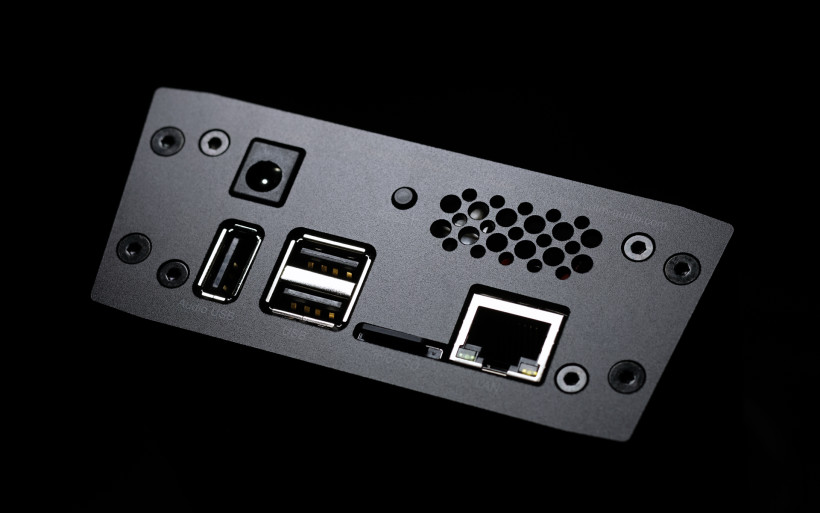 The machine’s rear sports one RJ45 and two Type A USB2.0 inputs. The former connects it to a router, whereas the latter two are meant to be used with external HDDs or thumb drives loaded with music and this functionality I gladly exploited. A bit above there’s a reset button and a power input to be used with either a regular wall-wart critter found inside my loaner’s box, SOtM’s sPS-500 or any other PSU fit for the job. Moving on, a microSD card with this company’s Eunhasu OS was already installed in a suitable socket and via one Type A USB output located nearby I connected the South Korean loaner to my DAC. In order to use sMS-200ultra with an external master clock, at additional cost of €200 one BNC input has to be installed.
The machine’s rear sports one RJ45 and two Type A USB2.0 inputs. The former connects it to a router, whereas the latter two are meant to be used with external HDDs or thumb drives loaded with music and this functionality I gladly exploited. A bit above there’s a reset button and a power input to be used with either a regular wall-wart critter found inside my loaner’s box, SOtM’s sPS-500 or any other PSU fit for the job. Moving on, a microSD card with this company’s Eunhasu OS was already installed in a suitable socket and via one Type A USB output located nearby I connected the South Korean loaner to my DAC. In order to use sMS-200ultra with an external master clock, at additional cost of €200 one BNC input has to be installed.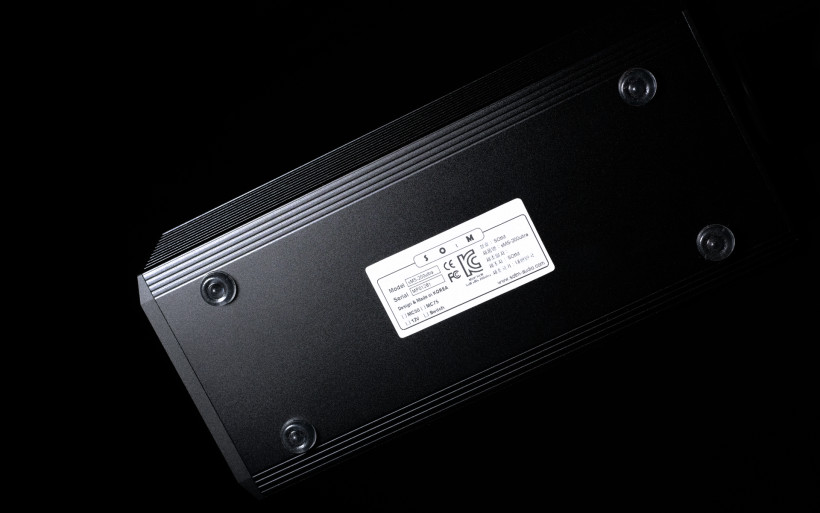 SOtM’s sPS-500 looks like this review’s main hero, the only visible differences are to be found on its rear. The former is loaded with an IEC socket, an on/off switch, a voltage (7/9/12/19V) selector, a 4-pin power output and it weighs more. It’s a linear PSU, whereas SOtM sMS200-ultra is essentially a very small computer based on AMD’s dual-core CPU and 2GB of DDR3 RAM. The product has no storage of its own and is the company’s proprietary sCLK-EX clock circuitry inside it is the reason behind the ‘ultra’ word in its name. This module can be purchased as a standalone DIY kit for €700. SOtM sMS-200ultra runs on Eunhasu OS; a Linux version tailored to this manufacturer’s needs, thus stripped from all things negative and not necessary for audio playback. This software will work with i.e. Music Player Daemon, Squeezelite, Logitech Media Server, HQplayer and LibreSpot and sMS-200ultra can be an endpoint for Roon.
SOtM’s sPS-500 looks like this review’s main hero, the only visible differences are to be found on its rear. The former is loaded with an IEC socket, an on/off switch, a voltage (7/9/12/19V) selector, a 4-pin power output and it weighs more. It’s a linear PSU, whereas SOtM sMS200-ultra is essentially a very small computer based on AMD’s dual-core CPU and 2GB of DDR3 RAM. The product has no storage of its own and is the company’s proprietary sCLK-EX clock circuitry inside it is the reason behind the ‘ultra’ word in its name. This module can be purchased as a standalone DIY kit for €700. SOtM sMS-200ultra runs on Eunhasu OS; a Linux version tailored to this manufacturer’s needs, thus stripped from all things negative and not necessary for audio playback. This software will work with i.e. Music Player Daemon, Squeezelite, Logitech Media Server, HQplayer and LibreSpot and sMS-200ultra can be an endpoint for Roon.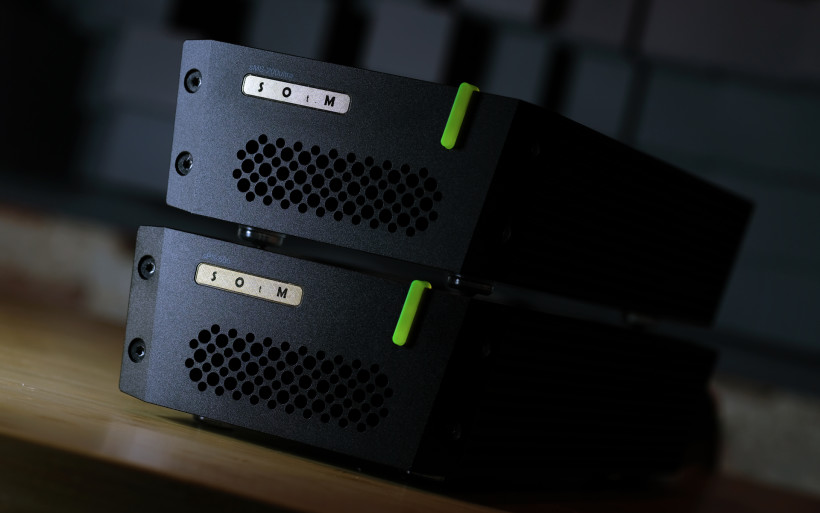 The setup process took less than 10 minutes and was straightforward. My Cisco WRTN610v2 router provided LAN and sMS-200ultra was connected to it via a 0.5m long Ethernet cable. The sPS-500 power supply married to my reference power strip fed its sibling via a short cord found inside its box. The RC of choice – iPad Air 2 – was then connected to a WiFi network previously established on the router and the sMS-200ultra’s USB1 port was occupied by a 16GB thumb drive loaded with music. The goal was to listen to the same material directly, thus without Spotify and the lot involved. The hardware part was sorted at this point and the tablet was on the job. ‘http://eunhasu.local‘ typed in its web browser directly was all it took to access to SOtM’s Eunhasu GUI. One tap on the Squeezelite logo found on the main screen made it active and green. Once my DAC was properly recognized (displayed as Combo384 Amanero USB Interface), a small player icon became active. It launched Logitech Media Server app in a separate browser window. This software looked and felt medieval to say the least but wasn’t too painful to use during several days long review process. In the long run I’d surely look for an alternative though. In any case, in LMS I went to ‘Music Folder’ and ‘USB1’ in that order directly to have access to all tracks stored on the previously connected USB drive.
The setup process took less than 10 minutes and was straightforward. My Cisco WRTN610v2 router provided LAN and sMS-200ultra was connected to it via a 0.5m long Ethernet cable. The sPS-500 power supply married to my reference power strip fed its sibling via a short cord found inside its box. The RC of choice – iPad Air 2 – was then connected to a WiFi network previously established on the router and the sMS-200ultra’s USB1 port was occupied by a 16GB thumb drive loaded with music. The goal was to listen to the same material directly, thus without Spotify and the lot involved. The hardware part was sorted at this point and the tablet was on the job. ‘http://eunhasu.local‘ typed in its web browser directly was all it took to access to SOtM’s Eunhasu GUI. One tap on the Squeezelite logo found on the main screen made it active and green. Once my DAC was properly recognized (displayed as Combo384 Amanero USB Interface), a small player icon became active. It launched Logitech Media Server app in a separate browser window. This software looked and felt medieval to say the least but wasn’t too painful to use during several days long review process. In the long run I’d surely look for an alternative though. In any case, in LMS I went to ‘Music Folder’ and ‘USB1’ in that order directly to have access to all tracks stored on the previously connected USB drive.
Sound
In order to review SOtM sMS-200ultra, Boenicke W8 speakers were used and so was English Trilogy 925 integrated amplifier. LampizatOr Pacific (KR Audio T-100 + KR Audio 5U4G Ltd. Ed.) handled the d/a conversion task and was fed either via Asus UX305LA or this review’s hero. The description down below is based on the sMS-200ultra powered by its kin, though later on two iFi audio products were added to the mix; iGalvanic3.0 and iUSB3.0. USB cables used to connect all listed boxes were iFi’s Gemini3.0 and Mercury3.0.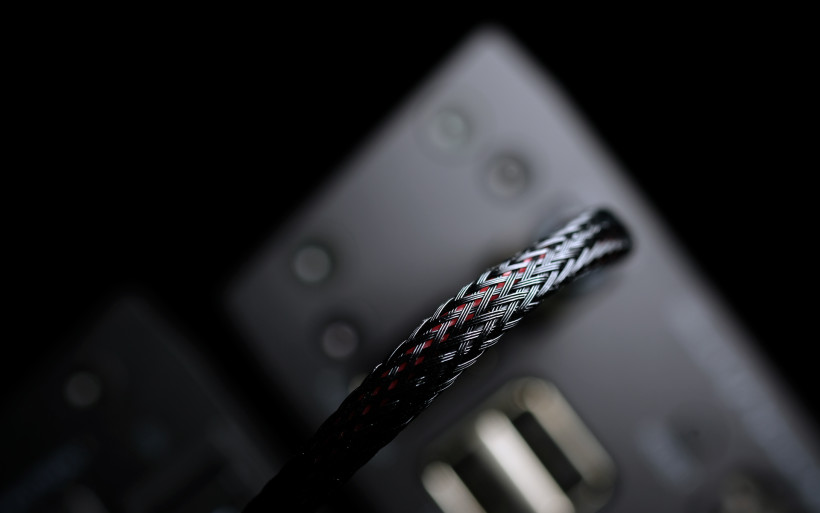 Let me get something out of the way first and point your attention towards my reference setup. At the moment it has two obvious weak links; GigaWatt PF-2 power strip and my laptop loaded with Foobar2000, HQplayer and JRiver. Over the years I’ve found both items perfectly usable, though tinkering with similar yet pricier hardware revealed many times already that my Trilogy 925 integrated amplifier, Boenicke W8 floorstanders and recently acquired Pacific DAC can do far better. The two listed culprits realistically bottleneck the experience audibly, thus should and eventually will be dropped, but for now deliberately serve as handy reality check tools. Put shortly, both efficiently showcase whether a pricier (usually that’s the case) power or files related newcomer component nets result drastically or barely mildly better at my place. This knowledge has tremendous value.
Let me get something out of the way first and point your attention towards my reference setup. At the moment it has two obvious weak links; GigaWatt PF-2 power strip and my laptop loaded with Foobar2000, HQplayer and JRiver. Over the years I’ve found both items perfectly usable, though tinkering with similar yet pricier hardware revealed many times already that my Trilogy 925 integrated amplifier, Boenicke W8 floorstanders and recently acquired Pacific DAC can do far better. The two listed culprits realistically bottleneck the experience audibly, thus should and eventually will be dropped, but for now deliberately serve as handy reality check tools. Put shortly, both efficiently showcase whether a pricier (usually that’s the case) power or files related newcomer component nets result drastically or barely mildly better at my place. This knowledge has tremendous value.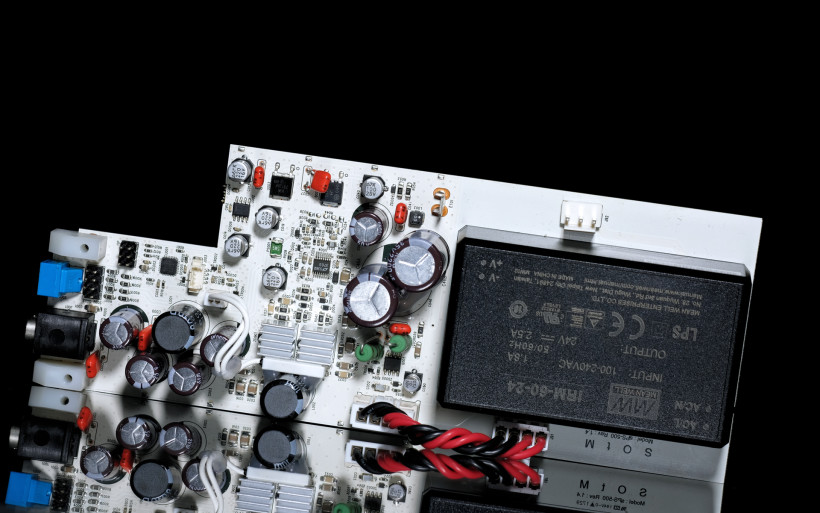 After the confession above it’s time to address the SOtM sMS-200ultra case. The initial expectations were modest at best, perhaps due to this product’s small size and quite affordable price tag. But what happened a bit later was very much unexpected. In comparison to my daily driver, this petite South Korean machine turned things upside down at my cave. Not a single spot it left unpolished, netted an outcome rarely this fabulous and witnessing how much better my setup sounded with SotM’s small box on-board was nothing short but liberating. The improvement was present on all counts, of very extensive nature and without a single drawback on top of that.
After the confession above it’s time to address the SOtM sMS-200ultra case. The initial expectations were modest at best, perhaps due to this product’s small size and quite affordable price tag. But what happened a bit later was very much unexpected. In comparison to my daily driver, this petite South Korean machine turned things upside down at my cave. Not a single spot it left unpolished, netted an outcome rarely this fabulous and witnessing how much better my setup sounded with SotM’s small box on-board was nothing short but liberating. The improvement was present on all counts, of very extensive nature and without a single drawback on top of that. SOtM sMS-200ultra didn’t grew on this reviewer’s ears but worked its magic right from the get-go. There was no need to switch back and forth between this deck and my laptop numerous times, not at all. The outcome arrived in an instant shortly past the very first swap and with no focus involved. It’s a rare thing to actually witness a change this audible and intense. Usually it’s associated with speakers yet a very similar story happened in case of this writing’s hero as well.
SOtM sMS-200ultra didn’t grew on this reviewer’s ears but worked its magic right from the get-go. There was no need to switch back and forth between this deck and my laptop numerous times, not at all. The outcome arrived in an instant shortly past the very first swap and with no focus involved. It’s a rare thing to actually witness a change this audible and intense. Usually it’s associated with speakers yet a very similar story happened in case of this writing’s hero as well. In comparison to my laptop, SOtM sMS-200ultra introduced changes on counts such as downstairs reach and slam and finished the low FR job via elevated muscularity, better texturing and increased vividness. The outcome led to bass far more present and feistier, but also denser and with better shove on top of that. The petite South Korean delivered more substantial and far livelier message overall, yet what caught me off guard was its completely boom-free attitude. My daily driver sounded thinner, smaller and once in a while had a grip on the lows easy enough to make them wobbly, whereas with the SOtM’s deck no such thing happened. The natural benefit of its extended reach and control led to increased expansiveness which translated to audible roar more felt than heard. On this count specifically the sMS-200ultra was similar to what Arek Szweda’s Blipo monitors combined with GigaWatt’s PC-2 EVO+ pulled off several months ago. It elevated the on-stage presence of background slam heard on Mari Boine’s “Dás Áiggun Cuozzut” in the same exact way. This writing’s star had its bass sorted meticulously, it didn’t elevate any of this FR’s virtues but connected them coherently.
In comparison to my laptop, SOtM sMS-200ultra introduced changes on counts such as downstairs reach and slam and finished the low FR job via elevated muscularity, better texturing and increased vividness. The outcome led to bass far more present and feistier, but also denser and with better shove on top of that. The petite South Korean delivered more substantial and far livelier message overall, yet what caught me off guard was its completely boom-free attitude. My daily driver sounded thinner, smaller and once in a while had a grip on the lows easy enough to make them wobbly, whereas with the SOtM’s deck no such thing happened. The natural benefit of its extended reach and control led to increased expansiveness which translated to audible roar more felt than heard. On this count specifically the sMS-200ultra was similar to what Arek Szweda’s Blipo monitors combined with GigaWatt’s PC-2 EVO+ pulled off several months ago. It elevated the on-stage presence of background slam heard on Mari Boine’s “Dás Áiggun Cuozzut” in the same exact way. This writing’s star had its bass sorted meticulously, it didn’t elevate any of this FR’s virtues but connected them coherently.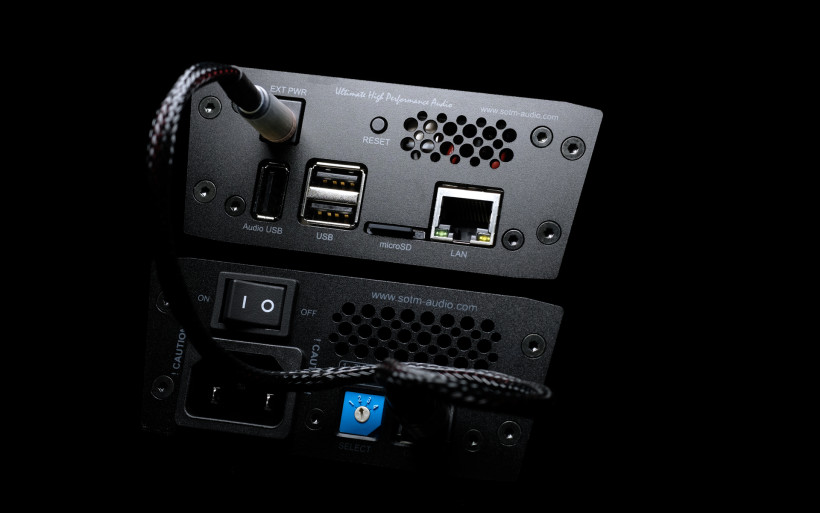 SOtM sMS-200ultra provided extensive sorting service upstairs too. It made i.e. vocals more tangible, smoother and upped the ante on their presence, guitars gained weight, definition and became livelier. Highs got denser too, decayed far longer and were served in more delicate way if needed. Put shortly, just think of an aspect and it got improved. But one of the most important changes that occurred with the SOtM’s machine on the job was mood amplification from one track to another. This feature is far beyond my laptop’s capabilities and so is pleasantly organic moisture and tunefulness the South Korean team introduced. To paint a proper picture, with the former device Therion’s “Never Again” recording found on this band’s latest “Beloved Antichrist” LP sounded fuller, more dynamic and articulate, livelier, bolder and far less artificial. There raw guitar energy was there and so was the sensation of musicians being in front of me instead of operation more distant, matte and locked in-between my Boenicke W8. Rodrigo y Gabriela’s live “Orion” cover originally by Metallica netted similarly intense and alive effect. This particular track’s slower more suave moments the sMS-200ultra showcased brilliantly to drastically change pace seconds later with ease. Additional examples I could multiply, but the gist is that my laptop did the same job in far less engaging and revealing way. This in general inferior machine sounded plainly duller all across the board, nowhere near as intense, posh and seasoned. Very quickly it became obvious to this reporter that it was emotionally crippled and simply outclassed.
SOtM sMS-200ultra provided extensive sorting service upstairs too. It made i.e. vocals more tangible, smoother and upped the ante on their presence, guitars gained weight, definition and became livelier. Highs got denser too, decayed far longer and were served in more delicate way if needed. Put shortly, just think of an aspect and it got improved. But one of the most important changes that occurred with the SOtM’s machine on the job was mood amplification from one track to another. This feature is far beyond my laptop’s capabilities and so is pleasantly organic moisture and tunefulness the South Korean team introduced. To paint a proper picture, with the former device Therion’s “Never Again” recording found on this band’s latest “Beloved Antichrist” LP sounded fuller, more dynamic and articulate, livelier, bolder and far less artificial. There raw guitar energy was there and so was the sensation of musicians being in front of me instead of operation more distant, matte and locked in-between my Boenicke W8. Rodrigo y Gabriela’s live “Orion” cover originally by Metallica netted similarly intense and alive effect. This particular track’s slower more suave moments the sMS-200ultra showcased brilliantly to drastically change pace seconds later with ease. Additional examples I could multiply, but the gist is that my laptop did the same job in far less engaging and revealing way. This in general inferior machine sounded plainly duller all across the board, nowhere near as intense, posh and seasoned. Very quickly it became obvious to this reporter that it was emotionally crippled and simply outclassed.
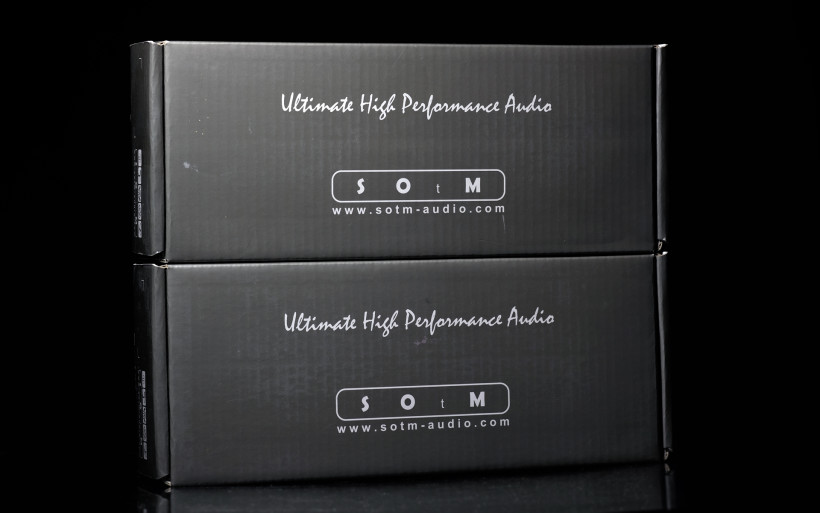 SOtM sMS-200ultra’s downstairs expansiveness provided more crack and boosted ambience, though this effect was heard on certain recordings with such effects embedded or instruments capable of showcasing it. But South Korean held an edge over my laptop in the imaging department as well. It netted sound wider and deeper, but also sorted more precisely and cleaner. Individual instruments and musicians were sketched by an upper echelon artist, thus were easier to distinguish and – in comparison to what my daily tool was able to muster – the outcome was simply of another class. The sMS-200ultra reminded me of Fidata’s HFAS1-S10U reviewed and awarded here. Both these decks are not dissection tools but clear music servants instead, potent mood makers capable of showcasing its beauty and prettifying it a bit even. And having said this, the former machine played along nicely even with music recorded badly enough for me to not bother. The sMS-200ultra did the best out of the worst situation at my place; tracks loaded with metallic and grainy tint normally perceived as itchy claptrap it morphed into something more digestible and personally I’ve found value in this.
SOtM sMS-200ultra’s downstairs expansiveness provided more crack and boosted ambience, though this effect was heard on certain recordings with such effects embedded or instruments capable of showcasing it. But South Korean held an edge over my laptop in the imaging department as well. It netted sound wider and deeper, but also sorted more precisely and cleaner. Individual instruments and musicians were sketched by an upper echelon artist, thus were easier to distinguish and – in comparison to what my daily tool was able to muster – the outcome was simply of another class. The sMS-200ultra reminded me of Fidata’s HFAS1-S10U reviewed and awarded here. Both these decks are not dissection tools but clear music servants instead, potent mood makers capable of showcasing its beauty and prettifying it a bit even. And having said this, the former machine played along nicely even with music recorded badly enough for me to not bother. The sMS-200ultra did the best out of the worst situation at my place; tracks loaded with metallic and grainy tint normally perceived as itchy claptrap it morphed into something more digestible and personally I’ve found value in this.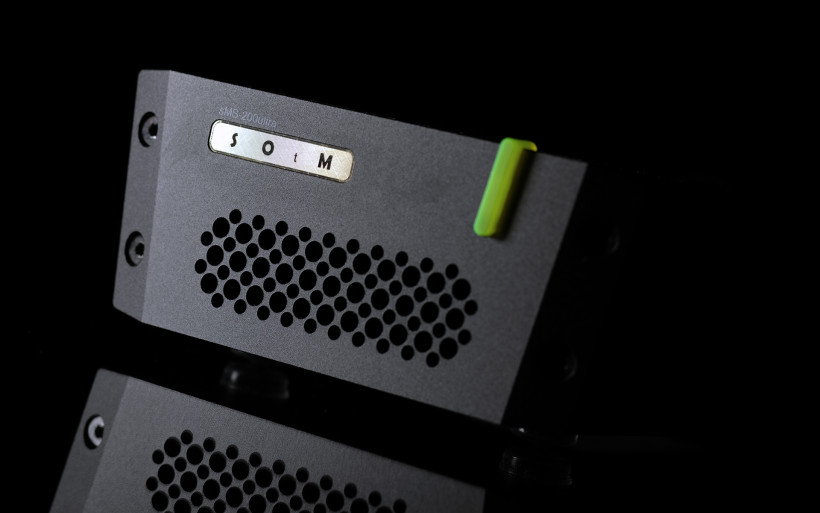 Once the SOtM sMS-200ultra + sPS-500 sensation was fully grasped, it was high time to ditch the PSU and hear how the former deck would fare all alone. My laptop remained far below it still, yet the difference between the two decreased by a fair bit. Somewhat stripped from its moisture, the sound became less tuneful and vivid in the process, the previously described pleasantly speedy bass was somewhat slower, its roaring potential shrunk as well and the overall intensity was lesser. Although very enjoyable still, the outcome was enough for me to now form the opinion that sMS-200ultra should be either fronted via its linear sibling or at least tried out with a standalone quality PSU instead of a regular wall-wart switcher. The sPS-500’s €500 ask seems to be justified after taking its rather significant input into account. Many times we spend far more and get far less in return.
Once the SOtM sMS-200ultra + sPS-500 sensation was fully grasped, it was high time to ditch the PSU and hear how the former deck would fare all alone. My laptop remained far below it still, yet the difference between the two decreased by a fair bit. Somewhat stripped from its moisture, the sound became less tuneful and vivid in the process, the previously described pleasantly speedy bass was somewhat slower, its roaring potential shrunk as well and the overall intensity was lesser. Although very enjoyable still, the outcome was enough for me to now form the opinion that sMS-200ultra should be either fronted via its linear sibling or at least tried out with a standalone quality PSU instead of a regular wall-wart switcher. The sPS-500’s €500 ask seems to be justified after taking its rather significant input into account. Many times we spend far more and get far less in return.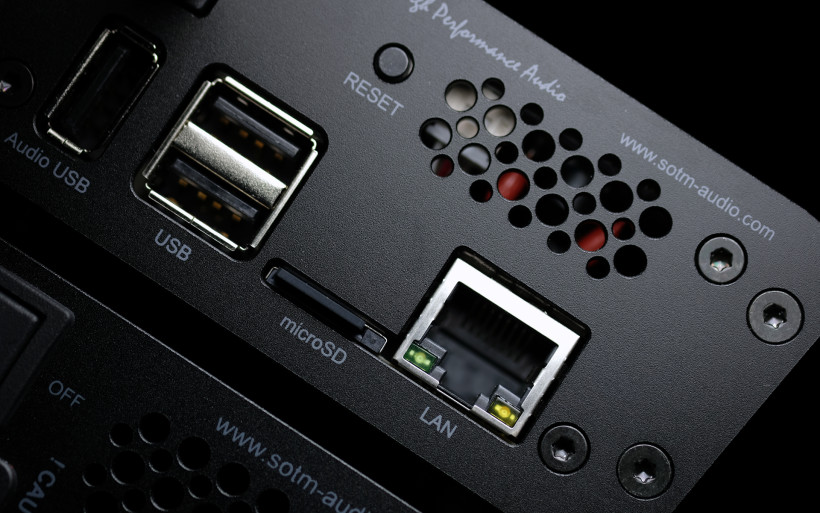 At this point the chat with Adam came back to me. Since components I had on hand were quite similar to his, the decision was made to execute the best-case scenario and follow the man’s steps. The sPS-500 powered my loaner connected to iFi audio’s iGalvanic3.0 via 0.5m Mercury3.0. Then yet another cable of the same type went from this isolator to iUSB3.0 fed with iFi’s 9V iPower. At this stage the second Brit connected with my DAC directly via Gemini3.0 twin-headed 0.7m long USB leash. The newly assembled chain involved four boxes plus three USB cables and then some, was the most hardcore variant possible and far from pretty. It proved to be difficult early on, which was expected. iGalvanic3.0 as a standalone product works with no issues at my place, though with other USB hardware upstream it can be and oftentimes is tricky. Time and patience were required. To have a proper handshake established, namely my DAC’s USB receiver recognized in SOtM’s Eunhasu GUI was the goal and with two iFi decks on-board it didn’t happen right away, thus iUSB3.0 was dropped.
At this point the chat with Adam came back to me. Since components I had on hand were quite similar to his, the decision was made to execute the best-case scenario and follow the man’s steps. The sPS-500 powered my loaner connected to iFi audio’s iGalvanic3.0 via 0.5m Mercury3.0. Then yet another cable of the same type went from this isolator to iUSB3.0 fed with iFi’s 9V iPower. At this stage the second Brit connected with my DAC directly via Gemini3.0 twin-headed 0.7m long USB leash. The newly assembled chain involved four boxes plus three USB cables and then some, was the most hardcore variant possible and far from pretty. It proved to be difficult early on, which was expected. iGalvanic3.0 as a standalone product works with no issues at my place, though with other USB hardware upstream it can be and oftentimes is tricky. Time and patience were required. To have a proper handshake established, namely my DAC’s USB receiver recognized in SOtM’s Eunhasu GUI was the goal and with two iFi decks on-board it didn’t happen right away, thus iUSB3.0 was dropped.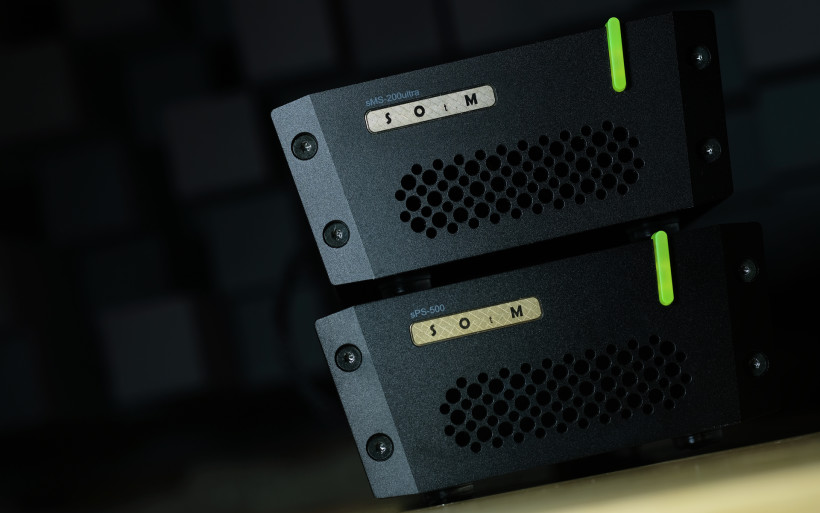 After numerous setup restarts and iGalvanic3.0’s knob flipped several times to be eventually set in the upper position, the music was finally on. This isolator’s input was audible, though far milder in comparison to sPS-500 at work and quite specific. Due to additional grain removal the picture became clearer, extra moisture was injected and the outcome was a bit faster, though leaner. Subjectively this was a progress, though some individuals would consider less muscle tissue and more clarity as a sideways move. After more time spent on hardware alterations, the iUSB3.0 became operational as well. In comparison to the iGalvanic3.0, this compact deck didn’t shift the current meta in any way but elevated the sound achieved thus far. Further grain removal and instruments sketched more precisely led to more fluent less restrained sound, though were improvements mildly intense. The iFi audio hardware is very effective with transports as subpar as my current one and less so in case of far better machines such as the South Korean team reviewed, which is understandable. The takeaway message is clear, though. The more complex this reporter’s USB setup became, the better the outcome was, which is presumably good news to heavyweight enthusiasts willing to push things as far as possible regardless of cost and on-shelf space occupied. After all, the more boxes and cables they have to play with, the merrier they are!
After numerous setup restarts and iGalvanic3.0’s knob flipped several times to be eventually set in the upper position, the music was finally on. This isolator’s input was audible, though far milder in comparison to sPS-500 at work and quite specific. Due to additional grain removal the picture became clearer, extra moisture was injected and the outcome was a bit faster, though leaner. Subjectively this was a progress, though some individuals would consider less muscle tissue and more clarity as a sideways move. After more time spent on hardware alterations, the iUSB3.0 became operational as well. In comparison to the iGalvanic3.0, this compact deck didn’t shift the current meta in any way but elevated the sound achieved thus far. Further grain removal and instruments sketched more precisely led to more fluent less restrained sound, though were improvements mildly intense. The iFi audio hardware is very effective with transports as subpar as my current one and less so in case of far better machines such as the South Korean team reviewed, which is understandable. The takeaway message is clear, though. The more complex this reporter’s USB setup became, the better the outcome was, which is presumably good news to heavyweight enthusiasts willing to push things as far as possible regardless of cost and on-shelf space occupied. After all, the more boxes and cables they have to play with, the merrier they are!
Summary
We’re barely halfway through the 2018 and it’s been full of exceptional audio discoveries already. Among more than a dozen products reviewed, only three were subjective game changers and now this personal elite club gained a new member. Not only price-performance wise but in general, the SOtM sMS-200ultra turned out to be a terrific performer and a potent eye-opener.
Nicely made, petite and a breeze to set up, SOtM sMS-200ultra also revealed itself as flexible on power and USB related accessories count. It can be left as is to keep things simple or be on the job with as many suitable boxes and cables as you please, to pursue potential gains via such additions is entirely up to you. Whatever your choice might be, SOtM’s own sPS-500 improved its sibling’s performance significantly, thus getting familiar with this PSU prior to any other is what I recommend.
My current transport’s subpar performance and my DAC’s USB input not immune but very much susceptible to tweaks factored in of course, thus SOtM sMS-200ultra had it easy at my place. I can’t predict what would’ve happened if – instead of my daily driver – I had a proper sparring partner nearby. That’s a story for another time and this sincere advice is the takeaway for today: if you roll with a laptop just like I do, you owe it to yourself to at least give SOtM sMS-200ultra network player a try and highly likely it’ll turn into a keeper. The improvement this sanely priced compact marvel introduced at my place was nothing short but drastic, which files it under the ‘clear winner’ tab in my book! ‘Till next time!
- Many thanks to the Koris crew for both SOtM loaners. If it weren’t for their kindness, this scribe’s journalistic life would be much more difficult this time around.
Associated equipment:
- Amplifier: Trilogy 925
- Sources: Lampizator Pacific (KR Audio T-100 DHTs + KR Audio 5U4G Ltd. Ed.)
- Speakers: Boenicke Audio W8
- Transports: Asus UX305LA
- USB components: iFi audio iGalvanic3.0, iUSB3.0, Gemini3.0 and 2x Mercury3.0
- Speaker cables: Forza AudioWorks Noir Concept, Audiomica Laboratory Celes Excellence
- Interconnects: Forza AudioWorks Noir, Audiomica Laboratory Erys Excellence
- Power supply: Gigawatt PF-2 + Gigawatt LC-2 MK2 + Forza AudioWorks Noir Concept/Audiomica Laboratory Ness Excellence
- Rack: Franc Audio Accesories Wood Block Rack
- Music: NativeDSD
Retail prices of reviewed components in EU (excl. tax):
- SOtM sMS-200ultra: €1’200
- SOtM sPS-500: €500
Manufacturer: SOtM


